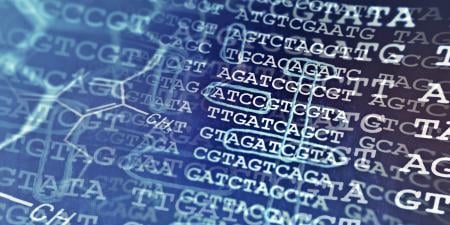When Jen S. McCabe got her direct-to-consumer (DTC) test results from 23andMe she posted a video of herself on Posterous.com as she went over the results. The video blog entry ended with this statement: “Personal health action item 1: Ask doctor at appointment Friday about celiac’s disease variant.” Like many other consumers of these new DTC genomic analysis services, Jen had taken our new knowledge of the human genome and made it her own; in Jen’s case, bringing others along for the ride by using Twitter to talk about her “me-ome.”
Jen is not alone. The proverbial “gene-ie” of personal genomics is out of the bottle and no amount of regulation is going to stuff it back in; it may well be the job of researchers and the health care community to play catch-up.
Getting into Your Genes
After 13 years and billions of dollars poured into the fledgling field of genomics research, the first draft of the complete human genome—the DNA code that directs the development of the human species—was published in 2001. A little more than 8 years later, it is now possible to sequence an entire genome in a matter of weeks for tens of thousands of dollars or less.
Since 2007, for a few hundred to a few thousand dollars the genetically curious consumer can have his or her genome analyzed. The costs are significantly discounted or waived entirely if the consumer agrees to be part of a research program. Information varies in its usefulness but covers ancestry, drug response, ideal diet, and disease risk. It has been called recreational genetic testing by some, but many consumers are treating the results with much more than passing interest.
A recent survey by the Genetics and Public Policy Center identified more than 35 companies offering DTC genetic tests, nine of which are classified as personal genome services [1]. The personal genome analyses provide a profile of many of the known single nucleotide polymorphisms (SNPs, pronounced “snips”)—relatively common variations in known locations across the genome. Our individual combination of these SNPs helps give us our unique genetic identity. Arguably the best known and most examined to date are U.S. companies 23andMe and Navigenics, and Iceland’s deCODEme, though new competitors such as San Diego-based Pathway Genomics are continuing to enter the marketplace in apparent anticipation of increased demand for services.
Any doubt about personal genomics going mainstream was put to rest in May 2009, when a European male was the successful, though only, bidder in an online auction on eBay to have his complete genome sequenced for $68,000 [2]. One recent study of Facebook users found that, while only 6 percent of respondents had thus far used the services of a personal genomics company, more than 60 percent said they would consider doing so in the future [3]. Interestingly, of those who said they would not use personal genomics services, over half felt the information would not be useful, while 40 percent were deterred by cost. New technology and more demand are driving down prices for these services and for whole genome sequencing. With price and access barriers coming down, the same $1,000 you might spend today on a genetic profile could reveal your complete genome sequence within a few years.
As tests become easier and cheaper, there are still significant concerns about the utility of the information provided by genomic analysis. DTC genomic profiles in particular have been criticized as providing little information of genuine value from a health perspective. Academics, clinicians, medical professional organizations, and government agencies in the United States, Canada, the United Kingdom, and elsewhere have voiced concerns about the analytic validity, clinical validity, and clinical utility of the tests. The main concern lies with the uncertain or weak associations of individual genetic variants and the poor sensitivity and positive predictive value of the results.
This lack of predictive power stems at least in part from the fact that our understanding of the influence of specific variants on disease predisposition is based on a body of knowledge that is constantly evolving, so that a SNP profile currently offers only a snapshot of a rapidly changing landscape of understanding. Moreover, SNP tests do not take into account other genetic variations (e.g., copy number variations), epigenetic factors, or gene-environment interactions, any of which can profoundly influence gene expression.
DTC personal genome service providers seem to acknowledge these limitations by carrying disclaimers that the results they deliver to consumers are for informational or educational purposes only and not for health care decision making per se. Despite the caveats, studies are showing that users of DTC testing and personal genomics services in particular, see the tests as providing information relevant to their health.
The same technological advances that are enabling sequencing costs to plummet are also greatly improving the speed, accuracy, and comprehensiveness of studies aimed at finding and validating genetic links to diseases and disorders, and providing new insights into epigenomics and genome-environment interplay. It is likely that at some point in the not-too-distant future, our understanding of the genome and of the health implications of the information it contains will be advanced enough that individual genome sequences or even SNP profiles—if the latter are not obsolete by then—will offer meaningful information their owners can use in proactively managing their health. But will they?
Advocates of DTC genomic profiling have argued that knowledge of their genetic makeups empowers consumers to be proactive about their health. But knowledge is empowering only if it is useful. In this case, usefulness requires that the knowledge be accurate, understandable, and actionable in some way. We have a ways to go before these criteria will be met for DTC genomic profiles, but it is possible if not likely that the criteria can be met and, moreover, it may be only a matter of time before they are met. In this future, consumers empowered to be more proactive will still face the challenge of changing their behavior in whatever ways are warranted—e.g., changes to lifestyle, diet or exercise regimens, or increased monitoring or screening.
It has also been suggested that there is a risk that changes undertaken may not be for the better. For some, the perception that genetic information is hard-coded and thus immutable, combined with an exaggerated sense of the particular influence of genes on health, may lead toward fatalism, causing them to believe that they lack power to make any difference to a genetically predetermined fate. Feeling powerless to overcome their genetic destiny, individuals may actually react to their profiling by choosing not to make positive behavioral changes, including changes they should be making regardless of any genomic profiling they undertake, such as improving diet or exercising. Finally, there is also the question of what kind of behavioral change would—or should—one make in light of a finding of being at reduced risk for, say, a condition such as coronary artery disease?
The question of whether and how genomic profiling will motivate behavioral changes in consumers has only begun to receive the research attention it richly deserves. How do these tests influence consumers’ perception of their health, their present, and their future? Perhaps not surprisingly, since it is still early days for the DTC genomic profiling industry, scant data are available regarding the impact of personal genomic information on individuals’ perceptions and behaviors.
Leaving aside clinical testing for rare single-gene diseases and disorders (e.g., BRCA1 testing for breast and ovarian cancer risk), the data we have on the influence of genetic information on behavioral change are not promising. Even where the information is more reliably predictive than much of the information that one gleans from DTC genomic profiles, some studies support the notion that genetic information has the power to motivate behavioral change, while others have shown that it leads to little or no significant and sustained changes in behavior. These studies, however, predate DTC genomic profiling and thus do not consider its niche in the genetic testing landscape.
New studies are now under way in a fresh attempt to address these questions and concerns in the specific context of DTC genomic profiling. For example, Navigenics has partnered with the Scripps Translational Science Institute, Affymetrix, and Microsoft to conduct a large-scale study of the impact of genomic profiling on consumers’ behaviors [4]. As of July 2009, more than 5,000 individuals had enrolled in the study.
But for now, the question remains: Will individuals change their behaviors—and in positive, health promotional ways—based on genetic information?
Jen McCabe has. So has Mike Spear.
Lessons from Early Adopters
Jen and Mike are just two examples, but they are informative. Their actions represent at least a subset of a growing number of early adopters of DTC genomic profiling, some of whom have chosen to share their experiences through social media.
23andMe recently offered a $99 Research Revolution version of its test that gives general information on disease risks, research reports, and traits but does not give access to some features such as the raw data. As soon as the service was offered, the social media site Twitter was buzzing with the information and thoughts from bloggers, researchers, and people generally interested in genetic testing. As soon as this service had been around long enough for results to come in, consumers in the social media space were raising questions about their results and, perhaps more interestingly, were reporting changes in behavior and diet, and plans to go to their doctor for follow-up discussions and tests.
Here are just a few of these consumers’ quotes lifted off Twitter and Facebook (names removed):
- @ this point, I’m the only one interpreting my #23andMe data, although I have a docs appointment this week, will use there 2.
- Full version!!!! Haven’t been this obsessed with a data stream since I first started getting credit card statements.
- Having a young family and needing to provide and wanting to be there for them for years to come, the information in the report really helps me focus on my health and understand what I need to do to achieve my goals in life.
Co-author Mike Spear submitted spit-kits to 23andMe and deCODEme in 2008, and complemented the analyses he received from the companies by using an online platform called Promethease to analyze his data via comparison to SNPedia (SNPedia.com), a third-party Wikipedia-style database that, when coupled with the Promethease software, takes the raw data from DTC profiles and analyzes it against collated SNP linkage data. There are currently 33 public information sets listed in SNPedia [5], some of which are full genome sequences while others are SNP analyses from 23andMe, deCODEme, and Navigenics.
With results in hand, Mike has been exploring and blogging about the experience and his perceptions of what the results have meant. The analyses from 23andMe and deCODEme showed him to be at increased risk for age-related macular degeneration (ARMD) and rheumatoid arthritis (RA). With no actual cure for ARMD, he has committed to regular eye testing to monitor for signs of ARMD, and, since previous blood tests for RA were negative, he is prepared to wait from some symptoms to appear before taking further action.
The SNPedia analysis, however, raised a few more questions that led Mike to take a proactive approach to his health. Unlike the 23andMe and deCODEme analyses, the SNPedia analysis revealed a significantly increased (17 times) risk of negative effects when taking statin drugs (used to lower cholesterol levels), which is something he told his general practitioner about in case it becomes relevant some day. The SNPedia data also showed an increased risk of suicidal thoughts when taking certain antidepressants, which he also shared with his general practitioner to keep in mind down the road.
His general practitioner’s reaction to the information is typical of what many doctors report. They do not have the background or training in genetics, genomics, or genetic counseling to know exactly what to do with much or most of the information provided through these services. With doctors either lacking the training or time to tackle such questions from consumers, and without enough qualified genetic counselors available—despite the counseling offered by some of the DTC genomic profiling companies—consumers may turn to other sources of information; in an age where Google is now both a noun and a verb, these sources are often online databases, software packages, or social networks.
Some consumers are turning to social media communities such as Twitter or Facebook to help them interpret their data, often resulting in person-on-the-street style discussions, which may or may not be rooted in reliable knowledge and understanding. On Facebook, for example, lay groups have been formed to share information, results, and actions—both potential and undertaken—in response to positive test results for the BRCA1 risk factor. Even DTC genomic profiling companies offer social-media-style exchanges of information through their own web sites. The companies do not generally insert themselves into the discussions, which feature broad interactions among people who have had the tests and are exchanging ideas, advice, and health-related lifestyle changes.
Looking Ahead
Whether from companies, physicians, or social networks, more and more people are coming to expect unfettered access to all the information they can find about their health, including arguably premature glimpses into their genome. Some will act on that information, imbuing it with relevance it may or may not actually have, while others will ignore it much like they choose to ignore warnings about the dangers of smoking.
Going forward, it is important that:
- Existing regulations against false advertising are enforced and that the benefits of DTC genetic services are not overhyped.
- Proper certification for profiling labs is maintained and their quality controlled.
- More genetic testing-related information and related training is made available to health care professionals.
- Ways to increase the numbers of qualified genetic counselors are sought.
Probably the most important step, though, is straight-forward public awareness of the benefits, limitations, and risks of genomic profiling. One potentially promising approach will be for knowledgeable researchers, scientists, and clinicians to begin inserting themselves into the places to which information-starved consumers are turning, such as online communities. In this way, they can help consumers understand the meaning and impact of the information in their profiles and help them understand the limitations of that same information.
It has been widely suggested that personal genomics is here to stay. We agree. Although we are already seeing some hints of apparently beneficial impact of these services, we eagerly look forward to the future advancements in science, health care education, and community engagement that will be necessary for DTC genomic profiling to truly empower and affect meaningful action toward personal health care and prevention.
References
-
Genetics and Public Policy Center. Direct-to-consumer genetic testing companies. 2009. http://www.dnapolicy.org/resources/DTCcompanieslist.pdf. Accessed August 17, 2009.
-
Ballantyne C. Single bidder pays $68,000 to sequence his genome on eBay. Scientific American. May 6, 2009. http://www.scientificamerican.com/blog/60-second-science/post.cfm?id=single-bidder-pays-68000-to-sequenc-2009-05-06. Accessed August 17, 2009.
- McGuire A, Diaz CM, Hilsenbeck SG, Wang T. Social networkers’ attitudes toward direct-to-consumer personal genome testing. Am J Bioethics. 2009;9(7):3-10.
-
Navigenics. Landmark research study is launched to assess impact of personal genetic testing. 2008. http://www.navigenics.com/visitor/about_us/press/releases/scripps_study_release_100908. Accessed August 17, 2009.
-
SNPedia. Genomes. http://www.snpedia.com/index.php/Genomes. Accessed August 17, 2009.



